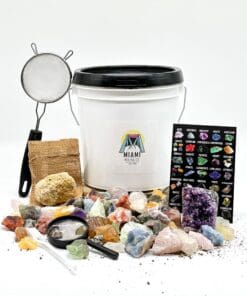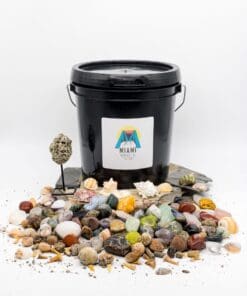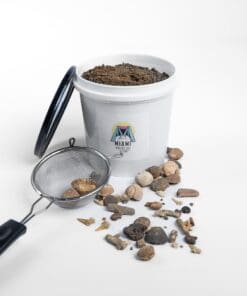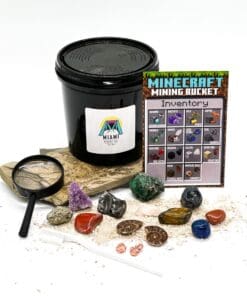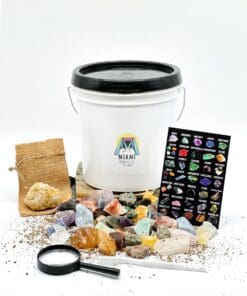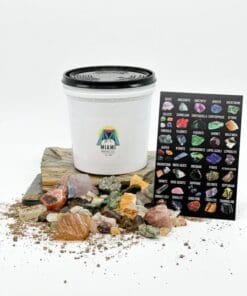Gem Mining Vermont: From History to Hands-On Experience Guide
Nestled within the verdant hills and valleys of Vermont lies a treasure trove of sparkling gems waiting to be discovered. The allure of gem mining in Vermont is undeniable; the promise of unearthing precious stones, the connection to nature, and the thrill of the find. This article delves into Vermont’s rich gemstone resources, best mining locations, historical context, and much more to equip you for an adventurous treasure hunt.
The Most Popular Gemstones in Vermont
Vermont boasts a diverse and rich range of gemstones, echoing the state’s vibrant geology. Whether you’re searching for a unique rarity or hoping to find more common treasures, Vermont offers something for every gem enthusiast.
Rare Gemstones Found in Vermont

| Gemstone | Description |
|---|---|
| Grossular Garnet | Vermont’s state gem, it displays a stunning deep green hue reminiscent of the state’s lush landscapes. |
| Aquamarine | A beautiful blue or turquoise variety of beryl. Known for its clear, water-like color. |
| Golden Beryl | A rare yellow variety of beryl that is occasionally discovered in Vermont. |
| Pyroxene | Typically dark in color, pyroxene can be green, black, or brown. It’s not often found in gem-quality in Vermont but is a prized rarity when located. |
| Tourmaline | A gem that comes in a spectrum of colors, but the varieties found in Vermont are typically green or black. |
Common Gemstones Found in Vermont
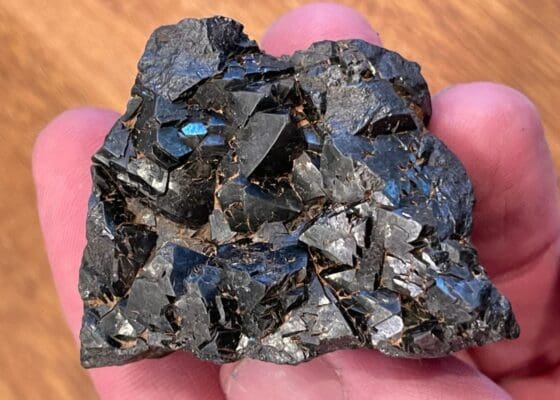
| Gemstone | Description |
|---|---|
| Quartz | A popular mineral that can be found in many forms, including clear crystal and smoky quartz. |
| Amethyst | A variety of quartz known for its stunning purple hue. |
| Mica | Silvery sheets of mineral often found alongside other gemstones. |
| Talc | Soft, often white or greenish mineral, known for its soapy feel. |
| Calcite | Commonly found in limestone, it often forms clear, rhomboid crystals. |
| Feldspar | Typically forming pink or white crystals, it’s one of the most common minerals in the earth’s crust. |
| Garnet | Besides the rare grossular variety, more common red garnets can also be found. |
| Magnetite | An iron oxide mineral that is magnetic. Often found as black or brownish-black crystals or masses. |
| Actinolite | Usually green and needle-like, it’s part of the amphibole mineral family. |
| Barite | This mineral can be colorless, blue, yellow, and other colors, often forming tabular crystals. |
Whether you’re a seasoned gem hunter or a novice eager to start your collection, the gems of Vermont offer an array of possibilities, waiting to be unearthed and treasured.
Top Gem Mining Locations in Vermont

- Roxbury Falls – Located just outside Roxbury, this spot is a favorite among garnet seekers. The falls are accessible year-round, with no fees associated with gem hunting, making it a popular choice for spontaneous outings.
- Green Mountain Rockhounding – Situated in the heart of Vermont, this locale offers guided tours for both beginners and experienced gem enthusiasts. Operating hours vary by season, so it’s advisable to visit their website or contact them for the current schedule and fee structure.
- Chittenden Mills – Nestled near the town of Chittenden, this site is renowned for quartz varieties, especially the smoky kind. It opens its gates from May to September, and there’s a nominal fee for entrance, which includes access to all mining areas.
- Barre Granite Quarries – While primarily a granite extraction site, the quarries around Barre occasionally yield quartz and garnets. Some quarries offer tours and allow for personal gem hunting, but hours and fees vary, so it’s best to call ahead.
- Grafton Gem Gorge – A picturesque spot located in Grafton, this gorge is famous for its aquamarines and quartz crystals. Open throughout the year, there’s a small fee to help maintain the paths and facilities.
- Bethel Blueberry Mines – Don’t let the name deceive you! While blueberries are a treat, Bethel’s mines are also a hotspot for blue tourmaline and quartz. It’s open from June to October, with variable operating hours and a moderate fee.
- Fair Haven Crystal Caves – As the name suggests, these caves near Fair Haven offer a chance to find crystals, primarily quartz, in their natural cave setting. Guided tours are available from April to November, and fees apply.
- Danby Quarry – Located in Danby, this marble quarry occasionally yields gem-quality grossular garnet. The site is open for tours during the summer months, and there is an associated fee.
- Stowe Schist Sites – The region around Stowe is known for its schist formations, which can sometimes hold garnets and other gems. These sites are scattered and vary in accessibility, so it’s advisable to connect with local gem clubs for guidance.
- Pittsfield Pebble Pits – A favorite among families, these pits near Pittsfield are abundant in a variety of gemstones, from quartz to amethyst. It’s open year-round with no fees, but donations for maintenance are appreciated.
With these locations spanning the length and breadth of Vermont, gem enthusiasts are sure to find a site that resonates with their passion and curiosity. Whether you’re hoping to uncover a rare gem or simply enjoy the therapeutic nature of the hunt, Vermont’s diverse mining locations promise an adventure worth remembering.
History of Gem Mining in Vermont
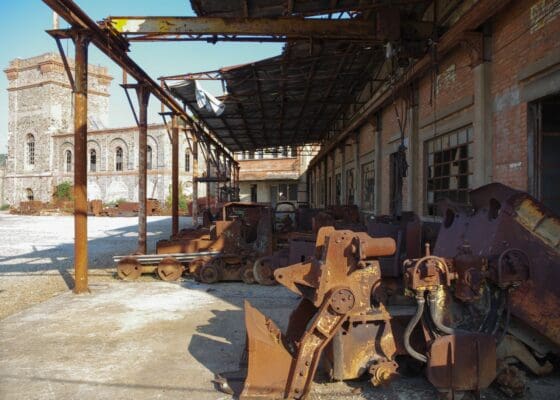
Gem mining in Vermont is a journey through time, touching not only the state’s geological evolution but also its cultural and economic history. Long before European settlers arrived, the Native Americans were Vermont’s original gem miners. These indigenous communities valued the land’s minerals not only for their beauty but also for their utility in creating tools and ornaments.
The 1800s saw a dramatic shift in Vermont’s gem mining history. With the onset of the Industrial Revolution, mining transitioned from a subsistence activity to a booming industry. Towns like Roxbury became synonymous with garnets, their lush landscapes revealing pockets of these gems. Similarly, places like Chittenden began to be recognized for their rich deposits of quartz. These discoveries were more than mere curiosities; they became significant contributors to the local economy, sparking a mining boom that saw Vermont attract prospectors and investors alike.
Tales from this era are interwoven with stories of individuals who, by chance, stumbled upon significant deposits, transforming their lives overnight. It was a period where children playing by riverbeds could spot glints of quartz or amethyst, and families could suddenly find themselves sitting atop a small fortune.
However, Vermont’s mining history is not without its challenges. As mining activities intensified, concerns about environmental degradation and sustainability emerged. The beauty of Vermont’s landscapes, characterized by its verdant forests and clear streams, was at odds with the aggressive excavation and waste generated by mining operations. The state’s residents and authorities had to grapple with balancing economic growth with preserving Vermont’s natural beauty.
In the 20th century, as larger mineral deposits were found in other parts of the US and worldwide, Vermont’s gem mining activities began to wane. The large-scale operations gave way to smaller, community-led efforts, and hobbyist collectors. Today, the legacy of Vermont’s gem mining history is evident not just in its gems but in its people, its culture, and its steadfast commitment to cherishing the land. This legacy serves as a bridge between past and present gem enthusiasts, connecting them through shared stories of discovery, wonder, and respect for Vermont’s geologic treasures.
Gem Mining Regulations in Vermont

Vermont, with its rich history of gem mining, has recognized the importance of balancing the thrill of discovery with the preservation of its ecological beauty. As such, the state has implemented a comprehensive framework of regulations that govern gem mining activities, ensuring both the protection of the environment and the continued enjoyment of this timeless pursuit for generations to come.
Firstly, and perhaps most importantly, is the need to acquire permission. If you’re considering gem mining on private land, obtaining the landowner’s explicit consent is mandatory. This rule not only upholds property rights but also ensures that prospectors don’t accidentally trespass or damage valuable land.
On state-owned lands, such as parks and natural reserves, specific rules might apply. Some areas may be entirely off-limits to gem hunting due to their ecological or historical significance, while others might have designated zones or times of year when such activities are permissible. Always check with Vermont’s Department of Environmental Conservation or the specific governing body of the area you’re interested in before starting your hunt.
When it comes to commercial or large-scale gem mining operations, the regulations become more stringent. A permit is typically required, which involves a detailed review of the proposed mining method, potential environmental impacts, and plans for land reclamation post-mining. This scrutiny ensures that Vermont’s landscapes remain unspoiled and that mining activities don’t result in lasting ecological damage.
There are also stipulations on the volume and type of minerals that can be extracted. These restrictions aim to prevent over-extraction and to ensure that gem hunting remains sustainable. After all, the magic of gem mining lies in the possibility of discovery, and depleting resources would rob future generations of this joy.
Moreover, ethical considerations also play a role. Vermont encourages fair labor practices in gem mining operations, ensuring that workers are treated with dignity, paid fair wages, and provided with safe working conditions.
Safety regulations are another crucial aspect. Mines, especially those that are underground, can pose significant risks. Proper ventilation, safe access points, and emergency protocols are just some of the considerations that come into play.
In conclusion, while Vermont’s gem mining regulations might seem extensive, they serve a dual purpose: to uphold the state’s commitment to its people and nature and to ensure that the enchanting world of gem hunting remains accessible, ethical, and sustainable for all.
Necessary Tools and Equipment for Gem Mining in Vermont
Engaging in the art of gem mining in Vermont requires not only passion and patience but also the right tools and equipment. Equipping oneself appropriately can mean the difference between a successful outing and a fruitless endeavor. Whether you’re navigating the depths of a cave, sifting through a riverbed, or scanning an open pit, your toolkit should be tailored to the task at hand.
1. Screening and Classifying Tools: Reveal those hidden treasures!
Description: Especially useful for locations near rivers or streams, these boxes help in sifting through the dirt, allowing water to flow out while larger stones remain. The boxes, made of a wooden frame and mesh bottom, facilitate the separation of gems from the mud or sand.

🛒 Explore Top Screening Sets on Amazon
2. Shovels and Trowels: Digging deep or just scratching the surface?
Description: For more delicate work or when dealing with softer grounds, smaller tools like hand trowels or even small brushes can be beneficial.

🛒 Find Quality Shovels and Trowels on Amazon
3. Picks and Hammers: The backbone of any gem hunting endeavor.
Description: These tools are ideal for harder terrains, especially when trying to extract gems from rock formations. They can help break apart larger rocks to reveal hidden gemstones inside.

🛒 Check Out Best Picks and Hammers on Amazon
4. Buckets: Your trusted companion for carrying treasures.
Description: The basics of any mining endeavor, a sturdy bucket, and shovel are essential. A standard garden shovel will suffice, but there are specialized shovels with pointed tips that make breaking into the earth easier.
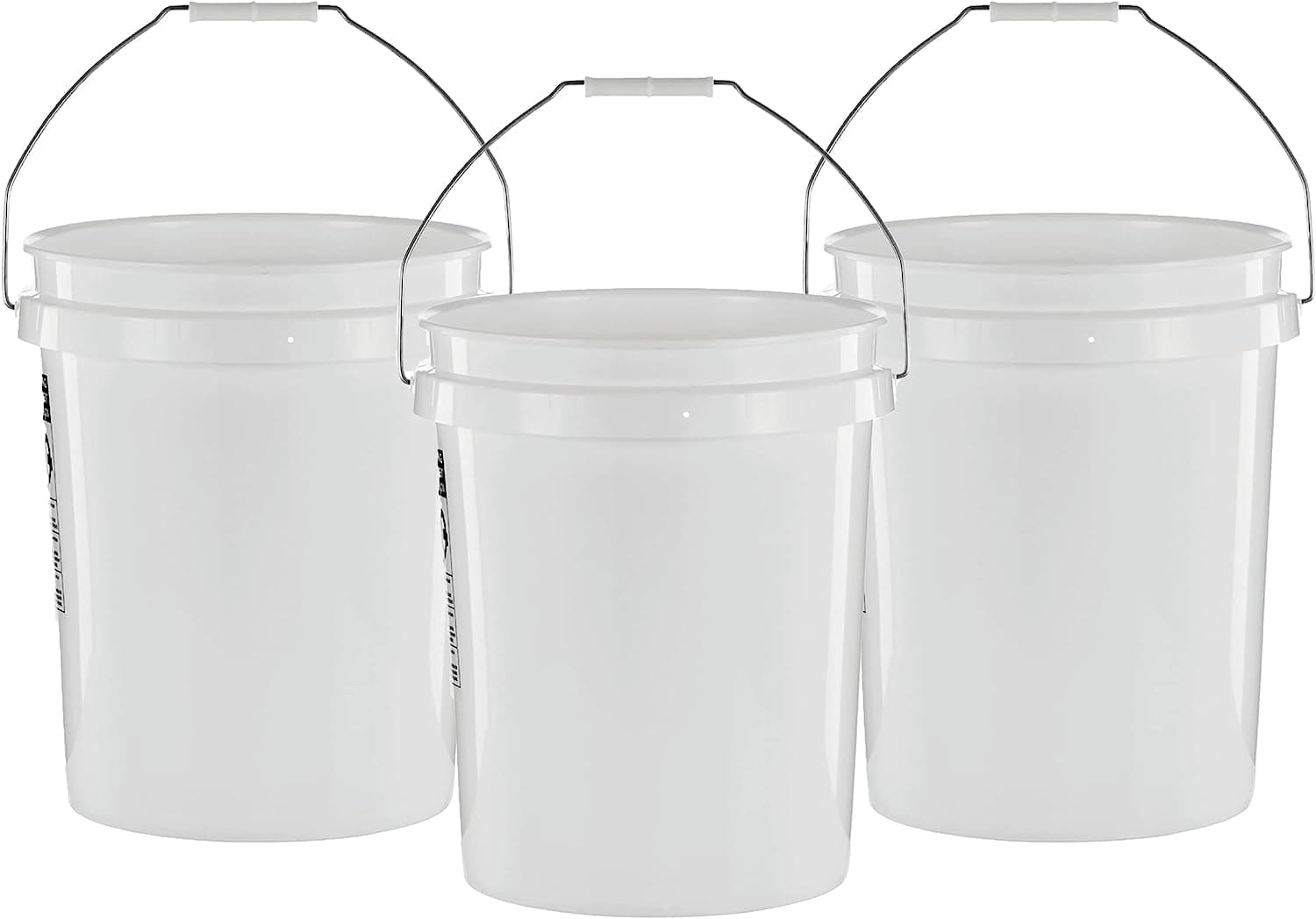
🛒 Shop for Reliable Buckets on Amazon
5. Magnifying Glass: Every detail counts!
Description: These tools are invaluable for examining potential finds up close. They allow miners to identify subtle details, distinguishing valuable gemstones from common rocks.

🛒 Grab Your Magnifying Glass on Amazon
6. Guidebooks and Field Guides: Knowledge at your fingertips.
Description: A gemstone identification book tailored to Vermont can be invaluable. Not only will it assist in identifying your finds, but it can also offer insights into where specific stones might be located.

🛒 Discover the Best Field Guides on Amazon
7. Containers and Bags: Organize, store, and flaunt your finds.
Description: As you uncover potential gems, you’ll need a place to safely store them. Small resealable bags or containers can help organize and protect your finds, ensuring they aren’t damaged during transport.

🛒 Shop for Storage Solutions on Amazon
8. First Aid Kit: Better safe than sorry!
Description: Given the nature of gem mining, minor injuries like cuts or scrapes are possible. A basic first aid kit, equipped with antiseptics, bandages, and pain relievers, is a must-have.

🛒 Secure Your First Aid Kit on Amazon
Venturing into Vermont’s landscapes in search of gemstones is an adventure, blending science, nature, and a touch of luck. By ensuring you have the right equipment, you’re not only enhancing your chances of unearthing a precious stone but also ensuring that the journey is enjoyable and safe.
Tips and Tricks for Successful Gem Mining in Vermont

Unearthing the hidden treasures of Vermont’s geology is both an art and a science. To increase the chances of a rewarding gem hunting experience, understanding the landscape, knowing what to look for, and being adequately prepared can make a significant difference. Here are some tips and tricks to enhance your gem mining escapades in the Green Mountain State:
1. Research and Planning: Before you embark on your trip, research the area you’re heading to. Some locations are renowned for specific gemstones. By understanding what’s common in an area, you can tailor your search strategy and know what to look for.
2. Join a Guided Tour: Especially for beginners, a guided tour can offer invaluable insights. Local experts often possess a wealth of knowledge about the best spots, techniques, and the types of gems you’re likely to find.
3. Patience is Key: Gem hunting isn’t always about immediate gratification. Sometimes, hours of searching might yield nothing, while at other times, a casual glance could reveal a gem. The journey and the anticipation are integral to the experience.
4. Optimal Timing: The best times for gem mining in Vermont are late spring to early fall. The weather is more favorable, and river levels are typically lower, making it easier to explore riverbeds.
5. Be Environmentally Conscious: Always ensure you leave the location as you found it, if not better. Filling in holes, not littering, and respecting wildlife are essential practices. The gems are a part of Vermont’s beauty, but so is its natural environment.
6. Collaborate and Share: Joining local gem and mineral clubs can offer access to exclusive sites, shared tools, and collective knowledge. It’s also a great way to meet fellow enthusiasts and learn from their experiences.
7. Dress Appropriately: Wear comfortable, durable clothing. Depending on the location, you might be climbing, kneeling, or wading in water. Protective footwear with good grip is crucial.
8. Stay Hydrated and Nourished: Mining can be strenuous. Carry enough water, especially if you’re exploring remote areas. Energy-rich snacks can also help keep you fueled during your hunt.
9. Document Your Finds: Take notes or pictures of where and how you found particular gems. This can help you refine your techniques and remember successful spots for future visits.
10. Trust Your Instincts: Sometimes, a hunch or a curious glint might lead you to a significant discovery. While knowledge is invaluable, intuition and curiosity can be equally rewarding.
In the end, gem hunting in Vermont is as much about the journey as it is about the finds. Embrace the adventure, the stories, and the beauty of nature, and you’ll find that every outing is a treasure in itself.
Handling Your Gemstone Finds
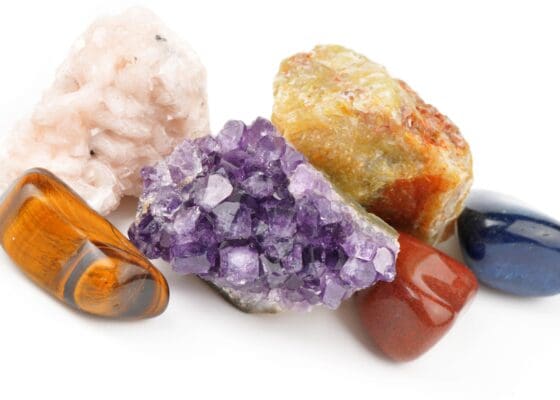
Once you’ve had the thrill of unearthing gemstones in Vermont’s rich landscapes, the next phase begins: caring for and showcasing your finds. These delicate treasures, shaped by nature over countless years, deserve meticulous attention. Here’s how to handle, clean, store, and appreciate your gemstones:
1. Initial Cleaning: Begin by rinsing your gemstones with water to remove any loose dirt or debris. For stubborn grime, a soft toothbrush can be used gently to scrub the surface without causing any damage.
2. Identification: Before doing any intensive cleaning, it’s crucial to identify the gemstone. Some gemstones can be sensitive to specific cleaning agents or methods. An identification guide or consultation with an expert can be invaluable.
3. Advanced Cleaning Methods: Once identified, some stones might benefit from specific cleaning methods. For instance, ultrasonic cleaners can be used for hard gemstones like diamonds or sapphires, but they might damage softer stones or those with inclusions.
4. Storing Your Gems: Individual pouches, boxes, or compartments are ideal to prevent gemstones from scratching each other. Soft, lined jewelry boxes or cases can protect them from external damage.
5. Displaying Your Finds: If you’re keen to showcase your gemstones, consider investing in a display case. Place them on stands, nestle them in velvet, or use acrylic boxes to allow for viewing from all angles.
6. Valuation: If you believe you’ve found something exceptionally valuable, consider having it appraised. Certified gemologists can provide insights into a gemstone’s quality, rarity, and potential market value.
7. Cutting and Polishing: Some gemstones may benefit from professional cutting and polishing to enhance their brilliance and showcase their best features. However, this is a specialized skill, so seek a reputable gem cutter if considering this route.
8. Setting into Jewelry: Turning your finds into wearable pieces is a delightful way to carry a piece of Vermont with you. Consult with jewelry designers who can guide you in choosing the perfect setting for your stone, be it a necklace, ring, or bracelet.
9. Documenting the Story: Every gem has a story – from the moment of its discovery to its journey with you. Documenting this story, with photos, notes, or even a journal, adds an extra layer of personal connection to the stone.
10. Respect and Appreciation: These gems, formed over millennia, represent a slice of Vermont’s geological history. Handle them with the respect they deserve, cherishing them not just for their beauty but for the tales of time, pressure, and transformation they silently carry.
In essence, your gemstones are more than just pretty stones; they are a bridge between you and the Earth’s vast history. Treat them with care, and they’ll remain radiant reminders of your Vermont adventures for years to come.
Famous Gemstone Finds in Vermont
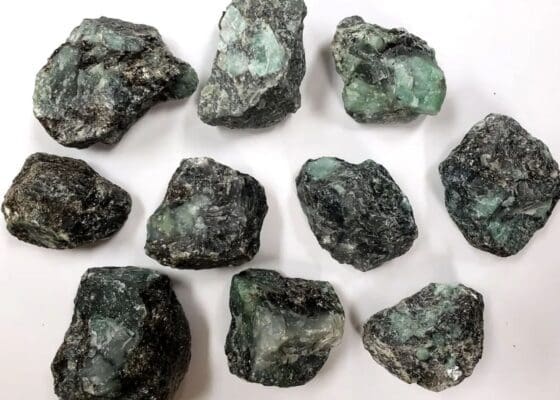
Vermont, with its rich geology and mining history, has been home to several remarkable gemstone discoveries. These finds have not only captured the imagination of enthusiasts but have also cemented Vermont’s status as a sought-after destination for gem hunters. Here’s a look at some of the most famous gemstone discoveries in the Green Mountain State:
1. The Vermont Star: Unearthed in the early 1900s, the Vermont Star is a magnificent sapphire, known for its deep blue hue and impressive clarity. Its discovery in the riverbeds of Vermont caused quite a stir, leading to increased interest in the state’s potential as a source of premium-quality gemstones.
2. The Green Mountain Emerald: In the mid-20th century, a miner chanced upon an emerald of exceptional quality. Dubbed the Green Mountain Emerald due to its origin and its vibrant, verdant hue, this gem remains one of Vermont’s proudest discoveries to date.
3. Grooved Garnets of Lake Bomoseen: Garnets are relatively common in Vermont, but the ones found near Lake Bomoseen have a unique feature – intricate natural grooves. These textured garnets have become sought-after collectibles, with some even finding their way into custom jewelry pieces.
4. The Royal Rutile: Rutile, a mineral known for its needle-like crystals, was discovered in a spectacular formation in the heart of Vermont. The specimen, resembling a royal scepter with its elongated shape and shimmering facets, was aptly named the Royal Rutile.
5. Smoky Quartz Clusters of Chester: In the late 20th century, a vast deposit of smoky quartz was discovered near Chester. Among these, a particularly large cluster, with its intricate arrangement and smoky translucence, stood out, gaining attention from gem enthusiasts globally.
6. The Twin Topaz: A miner once stumbled upon a unique topaz crystal formation that appeared as though two gemstones were growing side by side, sharing a common base. This rare “twin” formation became a focal point for gem exhibits.
These famous finds, though exceptional, represent only a fraction of the stories buried in Vermont’s landscapes. Every stone, whether rare or common, carries with it a tale of geological processes, time, and serendipity. Each discovery adds a new chapter to Vermont’s illustrious gemstone narrative, reminding enthusiasts and casual observers alike of the treasures that lie just beneath the surface, waiting to be unearthed and celebrated.
Additional Gem Mining Opportunities
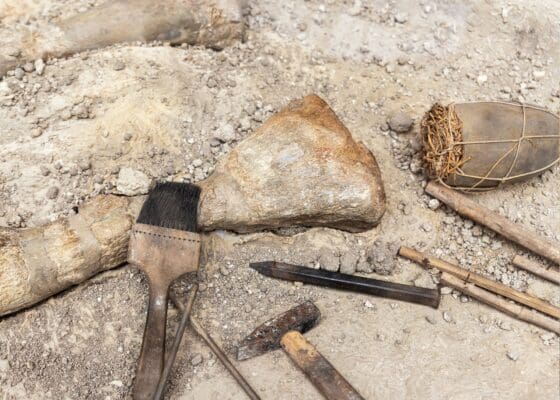
Vermont’s charm in gem mining is undeniable, but it’s worth noting that its neighboring states also offer unique opportunities for those with an unquenchable thirst for treasure hunting. Here are some of the nearby states with their gem mining allure:
1. New Hampshire Gem Mining: Known for its beautiful smoky quartz and garnet deposits, New Hampshire is a haven for gem enthusiasts. The White Mountains, in particular, offer rich pickings.
2. Massachusetts Gem Mining: Though not as well-known for gems, Massachusetts has sites abundant with tourmaline, garnet, and various mineral specimens, especially in its western regions.
3. New York Gem Mining: Beyond the dazzle of its city, New York boasts Herkimer diamonds (quartz crystals) and garnets in the Adirondack Mountains, making it a must-visit for avid gem hunters.
4. Connecticut Gem Mining: Connecticut’s geology is predominantly known for its garnet and beryl deposits. Almandine garnets are especially sought after by collectors and enthusiasts.
While Vermont remains a gem-rich territory, exploring its neighboring states can provide a broader palette of colors, histories, and stories for gem enthusiasts. Each state offers a distinctive geological tale, waiting to be discovered and appreciated.
Dive into the world of gem mining with our extensive Gem Mining Near Me guide for top tips and locations.
The Magic of Gem Hunting and At-Home Discoveries
Vermont, with its verdant landscapes and rich geological history, has long enchanted gem enthusiasts and casual travelers alike. The thrill of unearthing a shimmering relic of Earth’s past, a tangible connection to epochs gone by, is an experience that’s both exhilarating and humbling. The Green Mountain State beckons with its promise of treasures, tales of spectacular finds, and the serenity of its natural beauty.
Yet, not everyone has the luxury of venturing into Vermont’s fields or riversides. For those keen on experiencing the joy of discovery from the comfort of their homes, consider a general gem mining kit. These kits encapsulate the thrill of the hunt, offering a curated collection of gem-rich soil, tools, and identification charts. It’s a journey of discovery on a more intimate scale, allowing both adults and children to tap into the magic of geology, no travel required. Whether in the heart of Vermont or from your living room, the allure of gem hunting remains timeless and universal.


